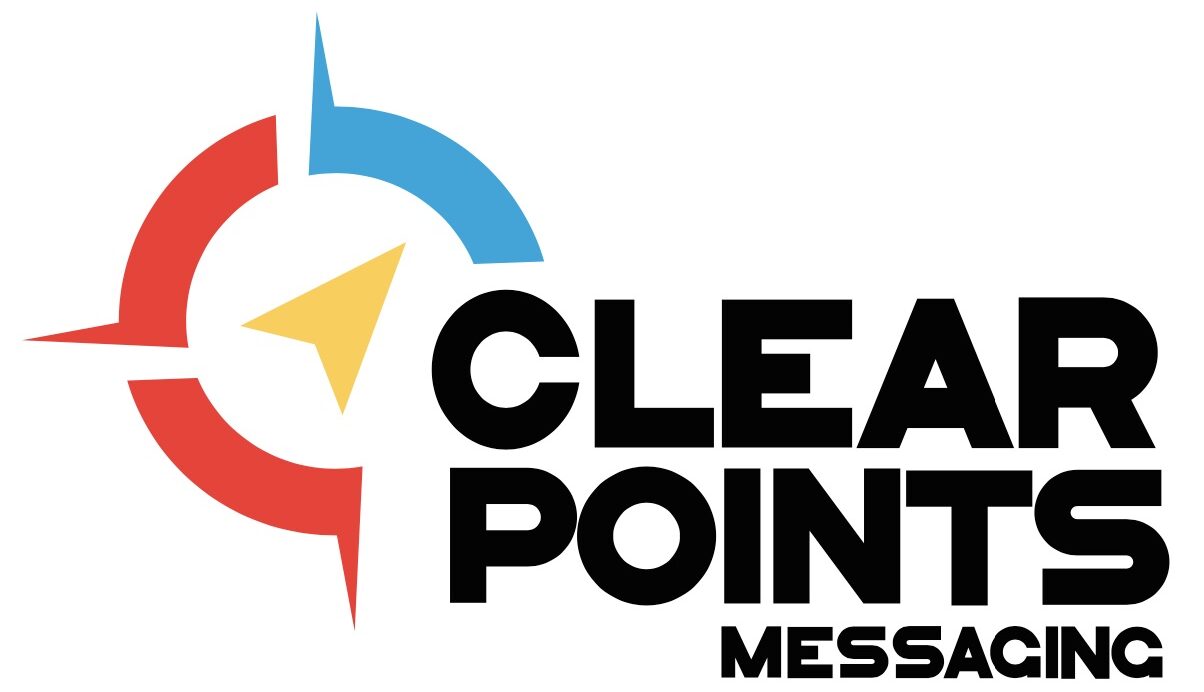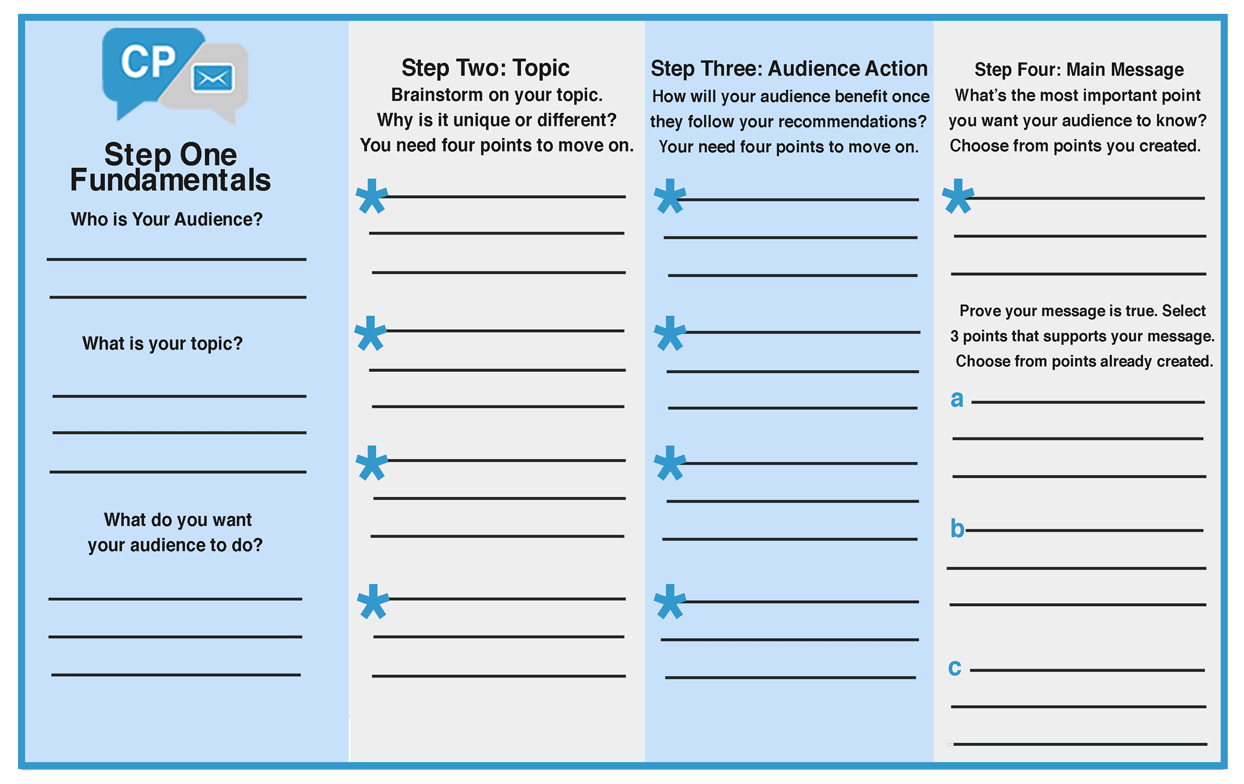When you make a set of key messages on a specific topic, they should guide everything you communicate.
When trying to persuade someone, or simply communicate your opinion, you only need one point to get across to your audience.
Here are the steps listed out and each one is explained below:
Section I: The basics
- Who is your audience?
- What is your topic?
- What do you want your audience to do?
Section II: The Brainstorms
- Brainstorm on your topic.
- Brainstorm on your audience recommendation.
Section III: Selecting Your Message
- Select the most important point
- Select your secondary points.
Section I: The Basics
 The first thing you need to do is answer the basic questions needed to write a good, sound message. These questions are often overlooked or forgotten when we begin writing or thinking about presentations or messages.
The first thing you need to do is answer the basic questions needed to write a good, sound message. These questions are often overlooked or forgotten when we begin writing or thinking about presentations or messages.
However, they are critical if we want to start brainstorming so we can find the right kind of clarity. Be brief in your answers. Take your time.
When we consult, the answers to the below questions go through several rounds of edits. Even though they look easy to answer, they can be challenging. Clarity is elusive, and it’s not until we get something on paper in a structured and disciplined way that we can start seeing results.
Identify your audience
We create key messages and marketing language to change people’s minds, to influence them and to get them to take action.
In a business sense, if you’re not influencing or changing behavior, then you are communication is ineffective. If you are not sure who your audience is, here are some key questions to ask.
-Who is your audience?
-Who is receiving this message?
-Who needs to hear it?
-Who do you want to influence?
Step Two: Clarify your topic
What is the topic of your speech or marketing message?
Don’t be fooled. This is a difficult question to answer. It shapes your entire message. When I help customers with their messages, this is the single question that takes the most amount of time. Sometimes you need a consultant just to answer this question.
This is true especially when you are offering an abstract service to the market or have a complex idea. Your topic is critical to get an accurate message.
Don’t use jargon. The best way to simplify any communication is to ask, “What do I mean?”
Step Three: What do you recommend to your audience?
 What do you want your audience to do? Or what do you recommend to your audience?
What do you want your audience to do? Or what do you recommend to your audience?
Once you have written down your audience and topic and are satisfied with your clarity, this step often becomes apparent. Don’t be afraid to state the most obvious call to action.
Here are some obvious ones:
-I want customers to buy my product.
-I want customers to subscribe to my email list.
-I want customers to call for a consultation.
-I want a prospect to say yes to a meeting.
Section II: Brainstorms

We’re going to take the answers from the topic question and audience action question and brainstorm about them.
You need a minimum of four points for each brainstorm to move on. But the more points… the better. It’s okay to state the most obvious thing in the world. And it’s okay to be redundant.
Step Four: Brainstorming on your topic
Brainstorm on your topic. Make very brief statements on why your topic is unique and different. Literally look at what you wrote for your topic… and think of points on why it’s different.
-How is your topic different from similar topics?
-What makes it unusual?
-What do you like about it most?
-Why is it important to you?
-What is something that you think is so obvious it doesn’t need to be communicated?
Step Five: Brainstorming on your audience recommendation
The second brainstorm asks how the audience will have the advantage because of your recommendation. This is usually when great messages are created.
You need four points to move.
Section III: Selecting your points
Step Six: Selecting the Main Message
First, you’re going to select the very best point. I tell customers, “If you could say only one thing to your audience, and one thing only, what would it be? What’s the most important thing out of this list you need to tell your audience?” Through a process of elimination, we narrow the points down into about four categories.
We pick the one we like best.
Step Seven: Selecting three points that support your main message
And then we pick three supporting statements from our list of points that prove the main message. So now… you should have a main message and three supporting points.
Conclusion
After going through this process you know:
- Your audience
- What you’re talking to them about
- What you want your audience to do
- A clear, organized message that expresses the most significant points about your topic
- The foundation for a strong key message.
Also… test and edit your message. Say it in everyday language. Make sure people are actually interested in what you say… instead of leaving them confused.


Comments are closed.